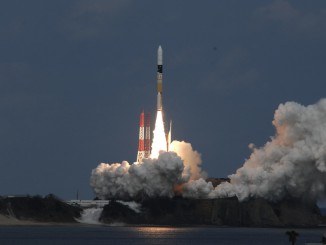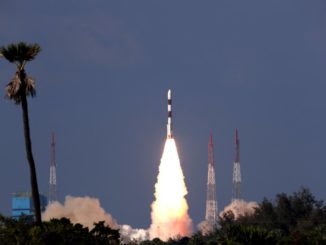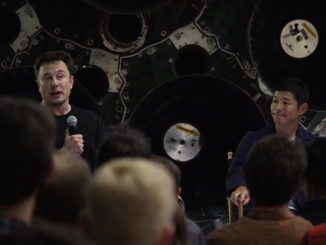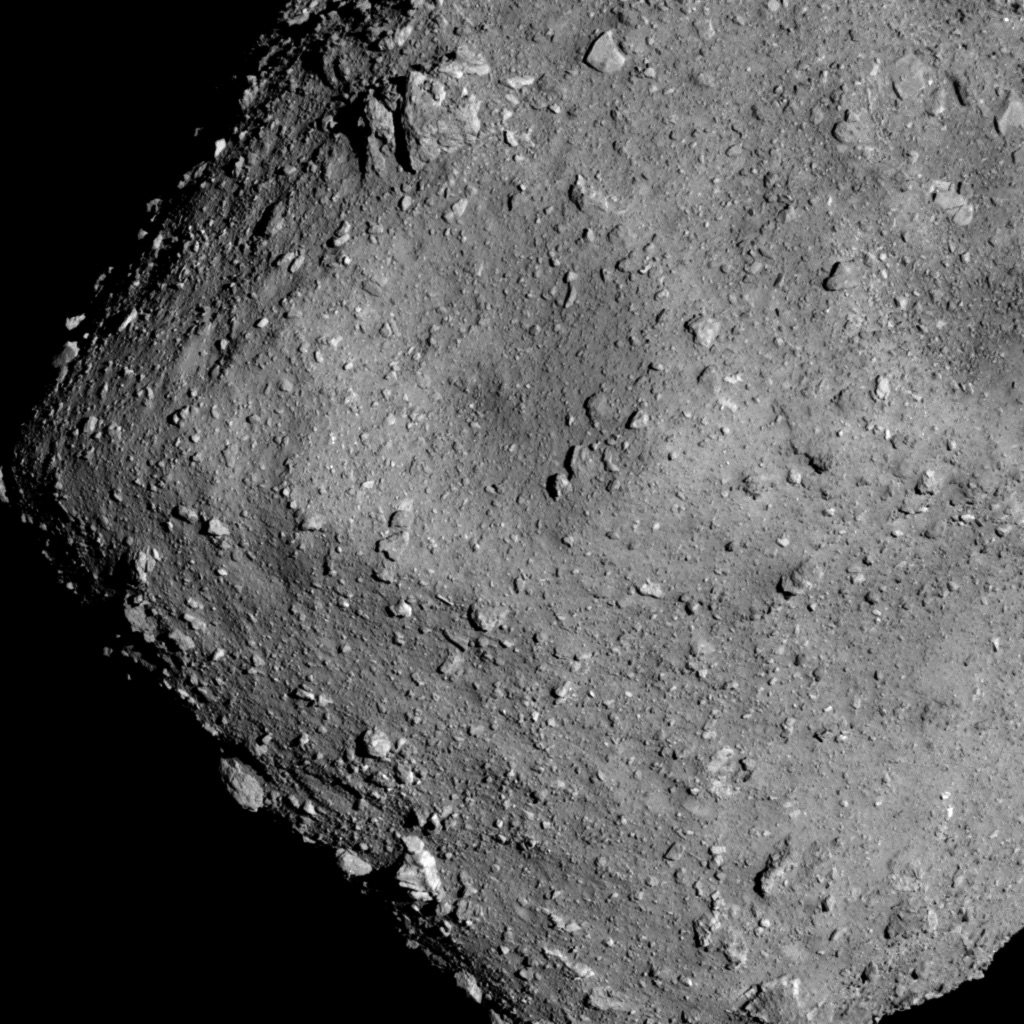
Japan’s Hayabusa 2 spacecraft is preparing to release three hopping robots to land on asteroid Ryugu in the coming month, with tiny instruments scientists hope will explore the airless world’s boulder-strewn landscape and return the first images from the surface of an asteroid.
Two of the landers developed by the Japanese space agency will be deployed together by Hayabusa 2 on Sept. 21, and another landing probe provided by German and French scientists is set for its descent to Ryugu on Oct. 3.
Those landing attempts will be preceded by a landing rehearsal using the Hayabusa 2 spacecraft to approach within 100 feet (30 meters) of Ryugu next week. The spacecraft is scheduled to reach its closest point to the asteroid Sept. 12, low enough to fire and test its laser range finder, a navigation sensor to be used on future touch-and-go maneuvers to snag a sample of Ryugu for return to Earth.
Next week’s practice descent will set the stage for a second rehearsal in mid-October, followed by the full sampling run at the end of next month.
The close-up maneuvers around Ryugu come after more than two months of mapping surveys, revealing Ryugu’s appearance for the first time after Hayabusa 2’s arrival in late June.
The mission’s early reconnaissance of Ryugu allowed scientists to measure its size and mass. The asteroid has a slightly flattened shape, spanning around 3,280 feet (1 kilometer) in diameter along its equator and approximately 2,880 feet (880 meters) from pole-to-pole.
Ryugu makes one rotation every 7.63 hours and has a mass of roughly 450 million metric tons (496 million tons), yielding a calculation of the asteroid’s gravity.

Scientists say Ryugu is a C-type asteroid, suggesting it contains primitive building blocks left over the formation of the solar system 4.5 billion years ago. Managed by the Japan Aerospace Exploration Agency, Hayabusa 2 will bring back specimens of the asteroid’s primordial surface for analysis in sophisticated laboratories on Earth.
Hayabusa 2’s deployable asteroid landers will make a leisurely descent to Ryugu after separation from the Hayabusa 2 mothership at an altitude of around 200 feet (60 meters). Ryugu’s tenuous gravity — 80,000 times weaker than Earth’s gravity field — will gently tug on the landing probes as they make an uncontrolled free fall to the asteroid, reaching the surface at a speed of less than 1 mph (about 30 centimeters per second).
The first pair of landers to be released Sept. 21 by Hayabusa 2 are carried inside the same container. The MINERVA-II robots, which each weigh a little more than 2.4 pounds (1.1 kilograms), are designed to hop across Ryugu, using cameras, thermometers and other sensors to investigate Ryugu from the surface.
Developed by JAXA, the disk-shaped MINERVA-II landers each have a diameter of 6.7 inches (17 centimeters) — less than the width of a typical dinner plate — and stand around 2.7 inches (7 centimeters) tall. The Hayabusa 2 mothership will put the landers on a trajectory to touch down in Ryugu’s northern hemisphere.
A third MINERVA-II lander carried by Hayabusa 2 is set to be released for a landing on Ryugu next year.
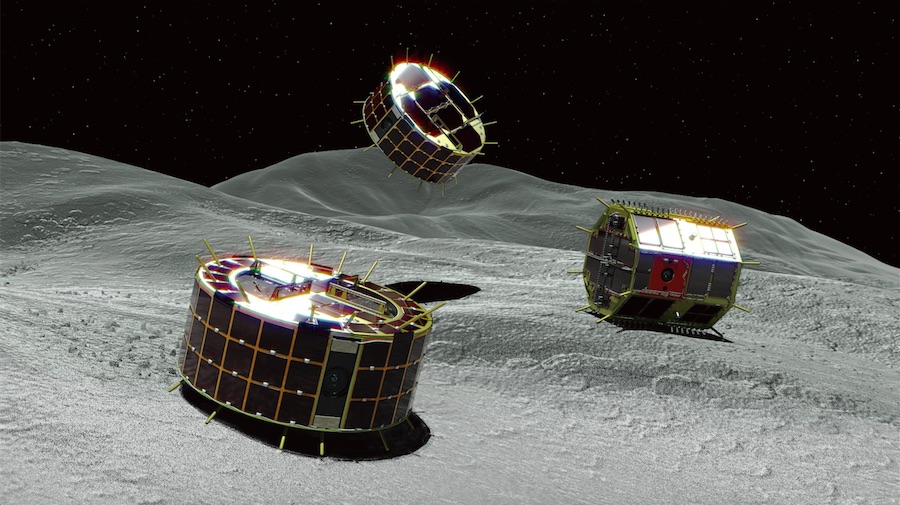
The mission’s largest landing craft is MASCOT — the Mobile Asteroid Surface Scout — a joint project by the German and French space agencies. It’s due to be released by Hayabusa 2 on Oct. 3.
Conceived and designed by the same team that developed the Philae lander, which made the first soft landing on a comet in 2014, the MASCOT spacecraft will bounce to a rest on Ryugu somewhere in the asteroid’s southern mid-latitudes.
“It’s a very small lander,” said Tra-Mi Ho, MASCOT’s project manager at DLR, the German space agency. “It’s not bigger than a shoebox, and its weight is not more than 10 kilograms (22 pounds).”
The MASCOT lander “carries four scientific instruments,” Ho said. “There is a wide-angle camera called MASCAM. It is there to determine the geology — the means to investigate the surface features of Ryugu — and for that it will require imaging at multiple wavelengths.
“We have got a microscope,” Ho said in an Aug. 23 press briefing in Japan. “It’s a spectral microscope provided by CNES (the French space agency). It is determining the mineralogy. It determines also the content of organic materials and hydrated minerals on the surface — of the water — by investigating the spectral features.
“We have a got a thermal radiometer,” Ho continued. “It is called MARA. MARA is detecting or investigating the surface temperature of the asteroid. We have got a magnetometer as well, which is called MASMAG. It is there to determine if a magnetic filed exists in the asteroid or in the boulders.”
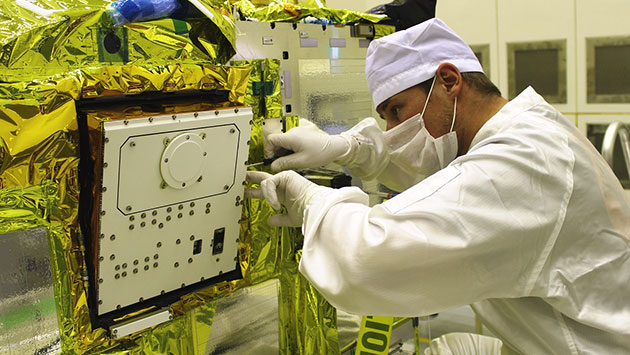
Billed by European scientists as Philae’s “little brother,” MASCOT carries a self-righting mechanism to orient itself after settling down on Ryugu’s surface. The autonomous lander will also try to hop to different positions on the asteroid during its planned 16-hour mission, which is limited by the capacity of the probe’s battery.
Ground teams carefully analyzed imagery and science data from Hayabusa 2 to select candidate landing sites for the MINERVA-II and MASCOT spacecraft.
Scientists wanted to ensure none of the landers end up near Hayabusa 2’s sampling target, located near Ryugu’s equator, and assessed numerous candidate landing sites to find locations relatively free of large boulders. Managers also considered temperature and communications constraints — all the landers have thermal limits and must relay data back to Earth through Hayabusa 2.
MASCOT science team members ranked their candidate landing sites during an Aug. 14 meeting in Toulouse, France, and briefed their proposal to Hayabusa 2 officials in Japan the following week. The teams announced the landing site selections for the MINERVA-II and MASCOT robots, along with the first of up to three sampling sites for Hayabusa 2, during a press conference Aug. 23.
But despite the diligence by engineers and scientists on Earth, the miniature landers must function in an extreme environment, with temperature swings and an asteroid surface marked with numerous boulders that could pose danger for the tiny robots.
“Ryugu seems to be very homogeneous, so you have got more or less the same composition everywhere,” Ho said. “Although we are happy, I think I will have sleepless nights until October,” she said. “Until we land there, we still don’t know how it looks exactly at the landing site … So the unknown boulder size distribution at the site, which is critical for MASCOT, is still imposing a risk for our mission.”
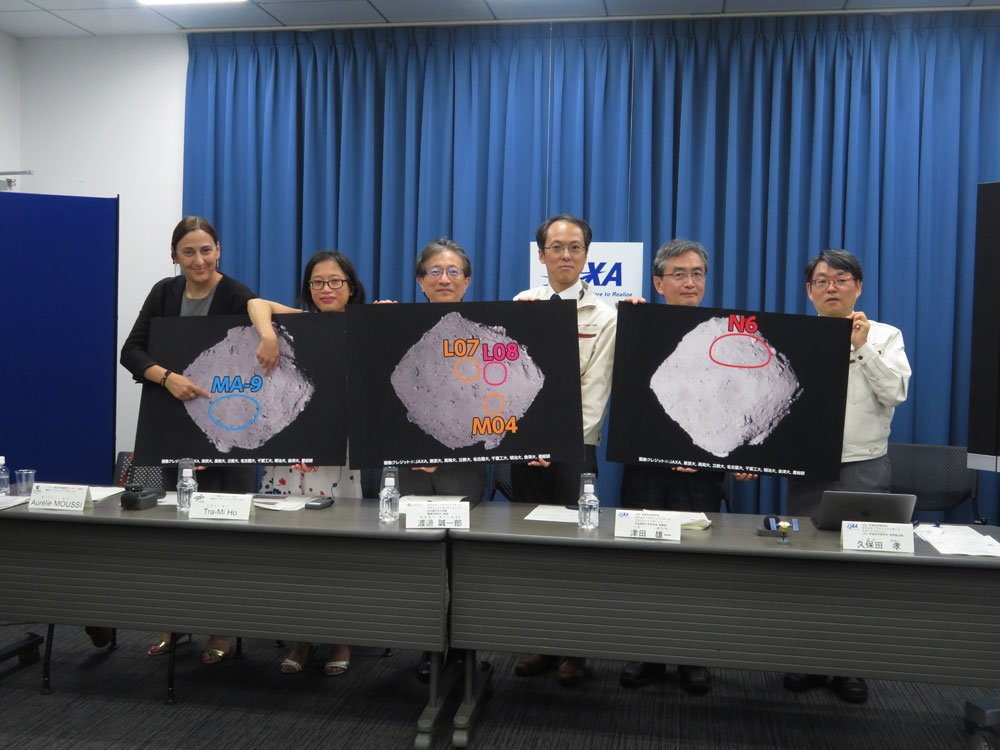
MASCOT was powered on for testing after Hayabusa 2’s arrival at Ryugu, confirming the robot survived its interplanetary cruise inside a carrier bay aboard the Japanese spacecraft. Hayabusa 2 launched on Dec. 3, 2014, and completed its nearly 2 billion-mile (3.2 billion-kilometer) journey to the asteroid June 27.
“MASCOT has been designed to be robust for launch, and on the asteroid, especially for landing,” Ho said. “If you consider the MASCOT landing, it’s like you drop MASCOT at roughly (a couple of inches) onto a table. So we think, from an impact point of view, it should be robust.
“However, we do not know how the asteroid looks,” Ho said. “So, for example, a very unfortunate (scenario) is MASCOT finally settles between two rocks, and it might be trapped.”
Hayabusa 2’s nano-landers will not be the first spacecraft to achieve a soft landing on an asteroid. That distinction goes to NASA’s NEAR-Shoemaker mission, which made a controlled touchdown on asteroid Eros in 2001 and unexpectedly continued beaming science data back to Earth.
But NEAR-Shoemaker did not return any asteroid images from the surface of Eros, leaving that “first” in space exploration up for grabs by MINERVA-II and MASCOT.
The Japanese-built MINERVA-II landers are based on a similar craft that flew with Japan’s Hayabusa mission to asteroid Itokawa, but that landing attempt was unsuccessful.
Hayabusa 2 is one of two sample return missions that are beginning their asteroid exploration campaigns this year. NASA’s OSIRIS-REx mission is scheduled to arrive at asteroid Bennu on Dec. 3, culminating in its own touch-and-go sample grab in mid-2020.
Hayabusa 2 is set to depart the asteroid in late 2019, with return to Earth scheduled for December 2020 with a parachute-assisted landing of the mission’s sample carrier in Australia.
Email the author.
Follow Stephen Clark on Twitter: @StephenClark1.

